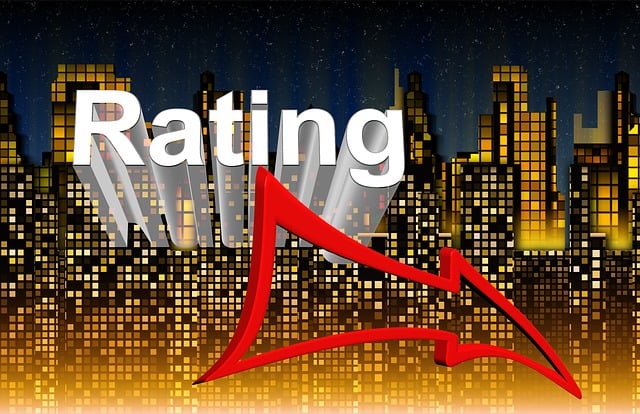Debt restructuring and debt review are strategies for managing overwhelming debt, catering to different scenarios. Debt restructuring renegotiates terms with creditors for lower rates or extended periods, ideal for large debts. Debt review, in contrast, evaluates the entire financial situation, creates a personalized plan through budgeting and strategic payment methods, focusing on long-term financial health. The choice depends on individual needs: significant debt restructuring or targeted debt review for specific issues or optimization.
In today’s financial landscape, understanding debt management is crucial. This article delves into two key strategies: Debt Restructuring and Debt Review, offering vital insights for those burdened by debt. We’ll explore what each entails, uncover their key differences, and provide a comprehensive guide to help individuals choose the best path forward. Whether you’re considering a complete overhaul or a more targeted approach, understanding these options is essential for navigating your financial future, especially in the context of Debt Restructuring Vs Debt Review.
- What is Debt Restructuring?
- Exploring Debt Review Options
- Key Differences Between Debt Restructuring and Debt Review
- Choosing the Right Path: Factors to Consider
What is Debt Restructuring?

Debt restructuring is a strategic financial process that involves rearranging or modifying the terms of existing debts to improve an individual’s or organization’s cash flow and overall financial stability. It offers a fresh start by changing loan structures, interest rates, repayment periods, or even debt amounts to make them more manageable. This option is particularly appealing when facing overwhelming debt burdens that cannot be sustained with current payment plans.
When considering Debt Restructuring Vs Debt Review, it’s essential to understand the distinctions. While debt review focuses on analyzing financial situations and negotiating with creditors for more favorable terms, often through reduced interest rates or extended timelines, debt restructuring goes a step further by reorganizing the entire debt portfolio. This can involve consolidating multiple debts into one with better terms or even considering bankruptcy as a last resort. Both options provide much-needed relief from crushing debt but cater to different financial needs and severity levels.
Exploring Debt Review Options

When considering debt relief, understanding the distinction between debt restructuring and debt review is vital. While both options aim to alleviate financial burden, they approach this challenge from different angles. Debt restructuring involves renegotiating terms with creditors, often leading to lower interest rates or extended repayment periods, making it a popular strategy for managing large debts.
In contrast, debt review focuses on evaluating your overall financial situation and creating a tailored plan to manage and reduce debt. It doesn’t necessarily involve direct negotiations with lenders but rather empowers individuals to gain control through budgeting, credit counseling, and strategic payment strategies. Choosing between these options depends on individual circumstances; restructuring is ideal for significant debt, while review offers a broader approach to long-term financial health.
Key Differences Between Debt Restructuring and Debt Review

Debt restructuring and debt review are two distinct strategies for managing financial obligations, each with its unique approach and benefits. The key differences lie in their scope and focus. Debt restructuring involves a comprehensive overhaul of an individual’s or business’s debt portfolio. It entails renegotiating terms with creditors, often leading to changes in interest rates, repayment periods, and the overall structure of the debt. This process is ideal for those burdened by significant debt, aiming to simplify and reduce their financial obligations over time.
In contrast, debt review focuses on a more analytical and strategic approach. It involves assessing the current debt situation, identifying areas of concern, and exploring various options to manage or eliminate specific debts. Debt review can include negotiating with creditors, seeking debt relief programs, or considering alternative payment methods. This targeted approach is suitable for individuals facing temporary financial setbacks or those looking to optimize their long-term financial health without necessarily restructuring the entire debt portfolio.
Choosing the Right Path: Factors to Consider

When faced with overwhelming debt, individuals often find themselves at a crossroads, contemplating the best course of action. This is where understanding the distinction between Debt Restructuring and Debt Review becomes paramount. Both options offer avenues to manage and alleviate financial burdens, but they cater to different needs.
One key factor in choosing between these paths is the nature of your debt. Debt restructuring involves a comprehensive approach, often requiring significant changes to repayment terms. It may include lowering interest rates, extending repayment periods, or even negotiating lower principal amounts. This option is ideal for those with substantial debts that are becoming unmanageable under current conditions. On the other hand, debt review focuses on evaluating and optimizing your financial situation without necessarily restructuring existing agreements. It helps individuals gain clarity on their spending habits, identifies areas of improvement, and explores options to reduce overall debt through strategic planning and budgeting adjustments.
Debt Restructuring and Debt Review are both powerful tools for managing financial obligations, but they serve distinct purposes. Understanding the nuances between these options is crucial for individuals navigating their debt. Debt Restructuring involves modifying the terms of your existing loans to make them more manageable, while Debt Review offers a fresh start by evaluating your entire financial situation. When deciding between Debt Restructuring Vs Debt Review, consider factors like current financial health, loan types, and long-term goals. By carefully assessing these options, you can choose the path that best aligns with your needs, ensuring a brighter financial future.

